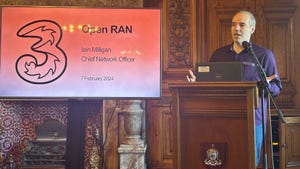Pulse Offers DSL Splitter
Pulse introduces Excelsus central office (CO) DSL splitter circuits for China, Japan, and other parts of Asia
May 22, 2003
SAN DIEGO -- Pulse, a Technitrol Company (NYSE: TNL), announced its Excelsus® central office (CO) splitter circuits meet the stringent specifications for the International Telecommunication Union (ITU). Flexible in design, they can be customized for various installations, including digital subscriber line access multiplexer (DSLAM) cards, rack-mount cards, cross-connect blocks and main distribution frame (MDF) cards. The CO circuits, measuring 12mm or less in height, provide high density, cost-effective custom solutions, allowing original equipment manufacturers (OEMs) to deliver more DSL capacity in their CO systems.
Suitable for plain old telephone service (POTS) applications, the splitters give telecom OEMs the ability to provide integrated solutions for high-speed xDSL networks in China and other parts of Asia. These Excelsus CO splitters are in compliance with the ITU-T G.992.1 E.2 performance standard, and are designed to meet Ministry of Information Industry (MII) standards. Excelsus CO splitters are also in compliance with standards set by ITU-T G.992.1 E.4, and are designed to meet Japan Approvals Institute for Telecommunications Equipment (JATE) standards.
"The primary advantage of our CO splitters is their density and scalability," said Millard Schewe, marketing manager for Excelsus. "We have the ability to accommodate up to 96 channels in just one unit height (or 1U) of rack space. Our CO splitter technology allows DSLAM manufacturers to fit more channels on smaller cards and allows MDF cross-connect suppliers the ability to integrate DSL filtering into their high-density connection blocks. There are a variety of Excelsus designs which can be modified to meet customer specifications."
The Excelsus CO splitters are passive devices with low energy consumption, requiring no cooling or cooling fans. Options include DC blocking capacitors, signature circuits, and over-voltage and over-current protection, as well as enhanced transient voltage suppression for peak data rates. The circuits combine the DSL signal from the DSLAM with the POTS signal from the phone switch. The integrated signal is then channeled to residences or small office home offices (SOHO), providing voice and high-speed data services on the same line.
Pulse Engineering Inc.
You May Also Like










